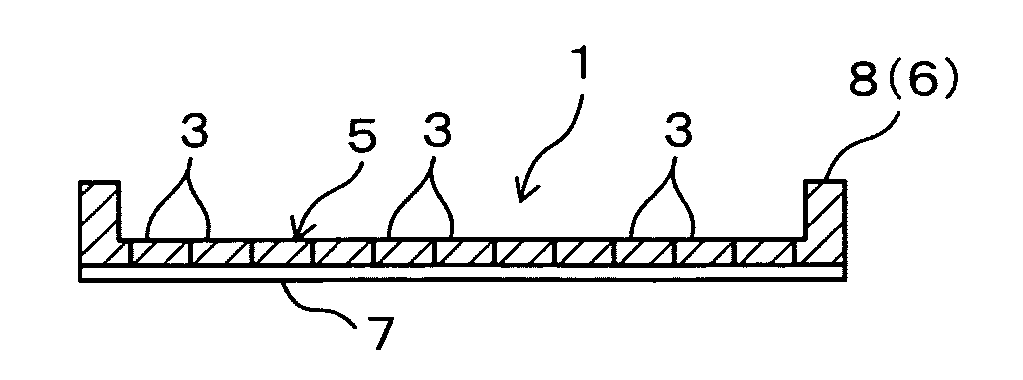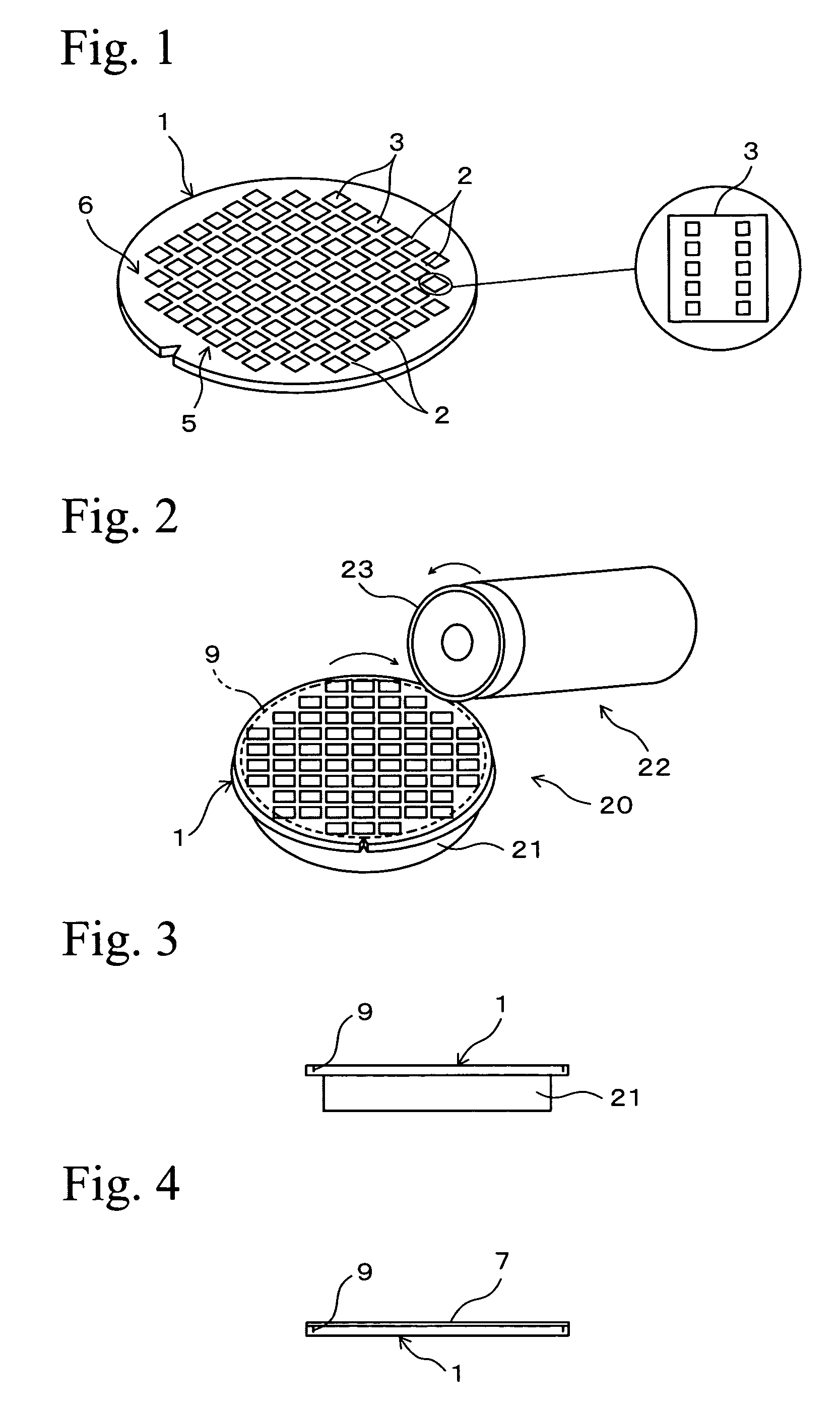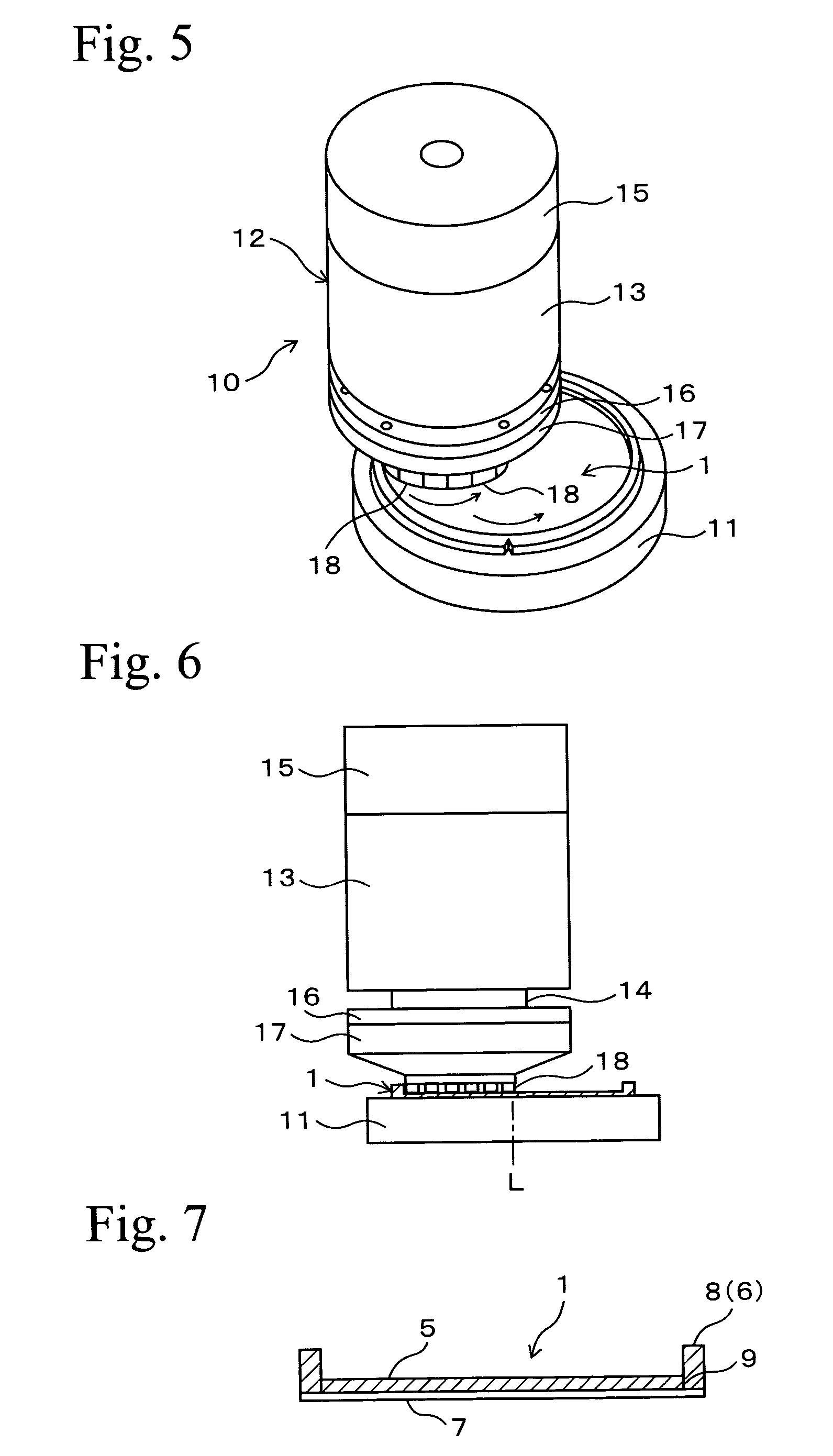Processing method of wafer
a processing method and technology of a wafer, applied in the field of processing methods of a wafer, can solve the problems of difficult to stably hold the semiconductor wafer, difficult to handle the semiconductor wafer, and easy cracking of the semiconductor wafer, so as to prevent the increase of costs and enhance the process for obtaining a plurality of devices from a wafer having an outer peripheral surplus region around the device region
- Summary
- Abstract
- Description
- Claims
- Application Information
AI Technical Summary
Benefits of technology
Problems solved by technology
Method used
Image
Examples
first embodiment
[1] Processing Method of the First Embodiment
[0037] Reference numeral 1 in FIG. 1 shows a disk-like semiconductor wafer (hereinafter referred to simply as “wafer”) such a silicon wafer. The thickness of the wafer 1 before it is processed is about 700 μm, and rectangular semiconductor chips 3 are defined by lattice streets 2. Electronic circuits are formed on front surfaces of the semiconductor chips 3. A region where the plurality of semiconductor chips 3 are formed is a substantially circular device region 5 which is coaxial with the wafer 1. An annular outer peripheral surplus region 6 exists around the device region 5.
[0038] This embodiment is a method in which a portion of a back surface of the wafer 1 corresponding to the device region 5 is ground, this portion is thinned to a necessary thickness, and respective semiconductor chips 3 are obtained from the thinned device region 5. In the following explanation, the term “front surface” of the wafer 1 is a surface on which electr...
second embodiment
[2] Processing Method of Second Embodiment
[0063] The processing method of the second embodiment is different from the first embodiment in the separation groove forming step which is the first step. The process from the protection tape adhering step to the dicing frame mounting step are the same as those of the first embodiment, but the final dividing step is omitted. Therefore, the separation groove forming step will mainly be explained.
[0064] In the separation groove forming step, a separation groove 9 is formed in each of the streets 2 of a wafer 1 shown in FIG. 1 before it is processed, and the wafer is previously divided into a plurality of semiconductor chips 3 preliminary. As shown in FIGS. 15 and 16, the cutting blade 23 of the cutting unit 22 cuts the wafer along the street 2 using the cutting apparatus 20 shown in FIG. 2, and the separation groove 9 having a depth corresponding to the finished thickness of the semiconductor chip 3 to be obtained is formed into a lattice sh...
PUM
| Property | Measurement | Unit |
|---|---|---|
| Thickness | aaaaa | aaaaa |
Abstract
Description
Claims
Application Information
 Login to View More
Login to View More - R&D
- Intellectual Property
- Life Sciences
- Materials
- Tech Scout
- Unparalleled Data Quality
- Higher Quality Content
- 60% Fewer Hallucinations
Browse by: Latest US Patents, China's latest patents, Technical Efficacy Thesaurus, Application Domain, Technology Topic, Popular Technical Reports.
© 2025 PatSnap. All rights reserved.Legal|Privacy policy|Modern Slavery Act Transparency Statement|Sitemap|About US| Contact US: help@patsnap.com



